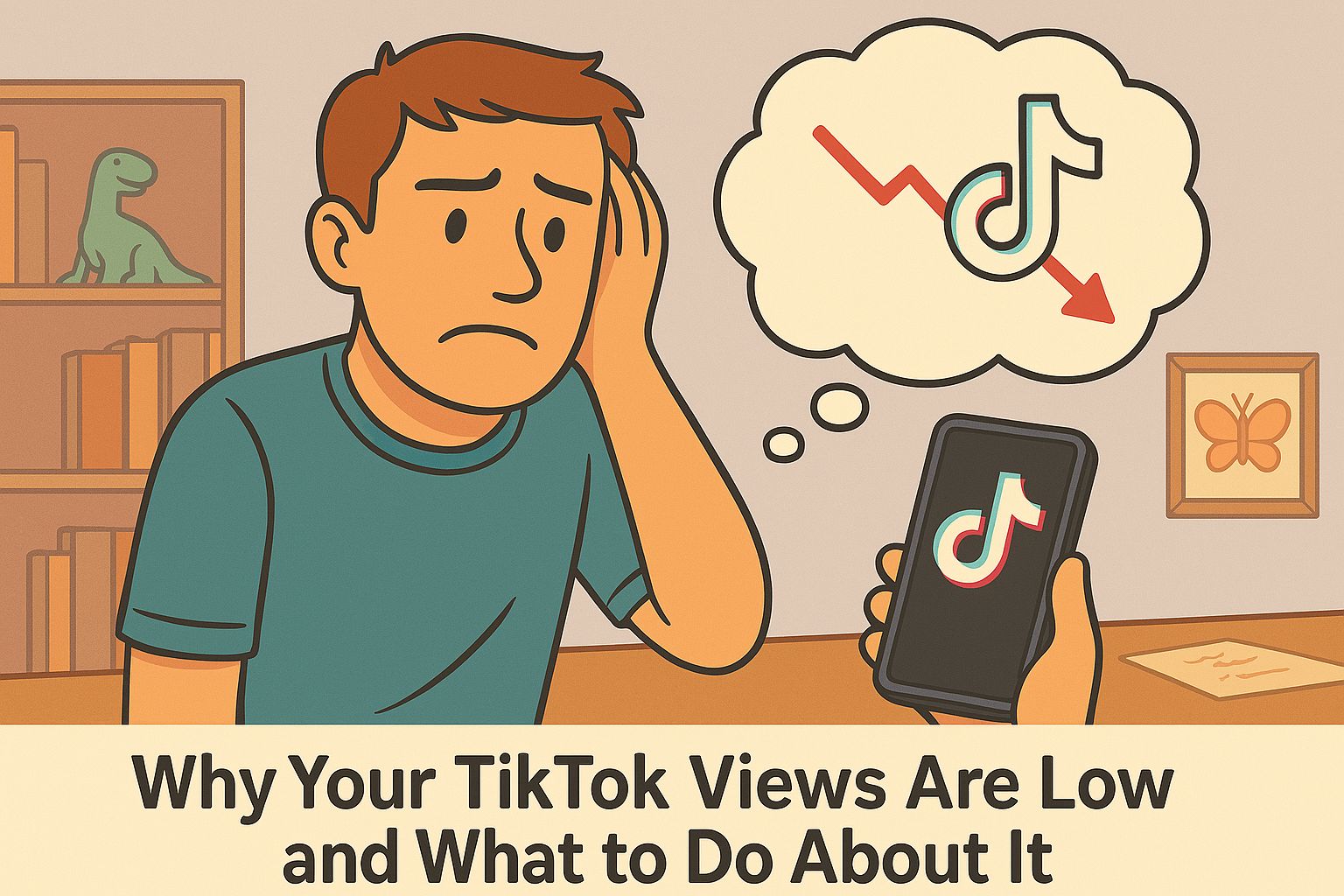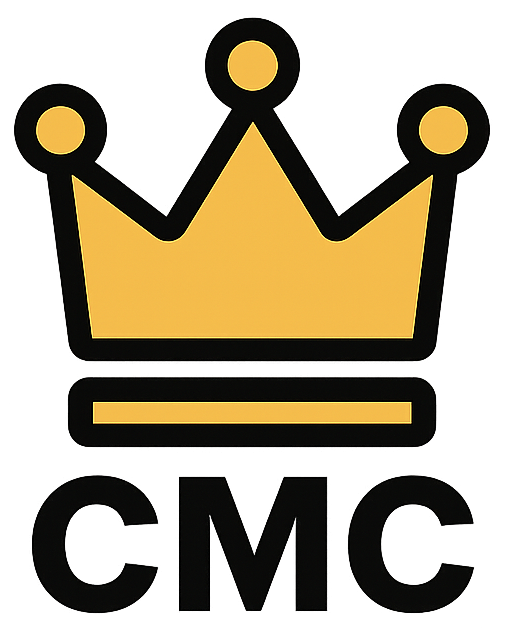Why Your TikTok Views Are Low and What to Do About It
One day you’re getting solid engagement, the next day your TikToks are doing worse than a school play on a Monday morning.
Sound familiar?
Yeah, I’ve been there too. And lately, it’s not just you or me—there’s been a noticeable shift in how TikTok shows content to people. That classic “post and hope it hits the For You Page” strategy? It’s losing steam.
But here’s the thing—there is a way forward. And it’s less about chasing trends and more about building a content engine that people (and the algorithm) can’t ignore.

TikTok’s Algorithm Shift
Something’s changed. If you’ve been posting regularly, you’ve probably felt it.
Your content used to land on the For You Page like clockwork, bringing in views from strangers who didn’t know you existed five minutes ago.
Now? Your biggest fan is your cousin, Brenda.
So what’s going on?
TikTok’s algorithm seems to be leaning more into the content-your-followers-want model—just like Instagram, YouTube, and, well, every other major social platform these days. That means your existing community is getting prioritized, and the FYP isn’t the low-hanging fruit it used to be.
Does that mean new creators are doomed?
Not at all. But it does mean the game has changed. The folks who focus purely on viral hits might find themselves with a large, disengaged audience. Meanwhile, creators who build around real connection? They’re seeing better retention, more shares, and even deeper engagement—despite lower view counts.
The Community You Think You Don’t Have (But Actually Do)
Here’s the part that trips people up: when someone says “build a community,” we picture an army of die-hard followers. Fan accounts. DMs full of strangers quoting your catchphrases.
But here’s the truth—if you’ve got anyone watching your videos consistently, you’ve already got the start of a community. Yes, even if it’s just 47 people and your dog’s burner account.
And honestly? That’s a better place to be than someone with 100k ghost followers who couldn’t pick them out of a lineup.
The advantage of a small, active audience is that you can experiment, pivot, and get real feedback without a digital crowd judging every move. This is where you start shaping content that’s actually aligned with who you are—and what people genuinely care about.
Got 200 followers? Cool. Those 200 people are more likely to support your next idea than 20,000 who forgot they followed you during that one viral moment six months ago.
What You Really Want to Create (And Why That Matters More Than You Think)
This is the part where a lot of creators stall out.
We post what we think will “do well,” not what we actually want to talk about. The result? A bunch of content that feels like homework and doesn’t perform anyway.
So here’s the uncomfortable question:
What kind of content would you love to make, even if no one watched it?
Maybe it’s storytelling. Maybe it’s reviews. Maybe it’s sharing hard-earned lessons or parenting hacks that helped you keep your sanity for one more day.
Whatever it is—write it down. Literally. Grab a notebook and make a list of all the topics, styles, and stories you’ve secretly wanted to post but talked yourself out of. The scary ideas are usually the good ones.
Those raw, unfiltered pieces of content? They connect. And in the current TikTok climate, connection trumps perfection every time.
Turning Your Passion Into Value (Without Turning Into a Try-Hard)
Now that you’ve got your content ideas, the next step is to make them useful to someone else.
That doesn’t mean you need to slap a “5 tips” title on every post or talk like a motivational speaker. You just need to ask yourself one question:
What’s the takeaway for the person watching this?
It could be:
-
A lesson they can apply
-
A feeling of being seen or understood
-
A new product or trick they didn’t know about
-
A laugh at something they thought only they struggled with
For example, if you’re a mom sharing honest moments from daily life, your viewers aren’t just there for entertainment—they’re looking for validation, ideas, or even product recs. A short clip about the chaos of setting up a nursery might lead someone to your breakdown of the best baby cribs, and just like that, your content becomes helpful and relatable.
That’s how you build support. You give something, and in return, people stick around—not because you’re viral, but because you’re valuable.
The Motivation Dip Is Real—Here’s How to Beat It
Every creator hits the wall. You put effort into filming, editing, writing captions… and then the video tanks. Again. It’s tempting to pull the plug and “wait until you have more followers.”
But here’s the catch—waiting doesn’t build momentum. Posting does.
You don’t need to go full Gary Vee and post 12 times a day, but consistency matters. A simple rhythm like three videos a week—focused, on-brand, and aligned with your new content direction—can change everything over time.
One underrated trick? Use a physical notebook to jot down ideas, observations, or comments that spark something. Call it your “second brain.” On low-motivation days, that thing is a lifesaver.
And if you prefer digital tools, I’ve found that using something like Flick’s AI assistant, Iris, can help keep the content engine running without overwhelming you. It’s built to support planning, strategy, and scheduling—basically a creative sidekick that doesn’t ghost you.
You’re not just creating content. You’re laying bricks. Show up, even when the views are low. Especially when they’re low. That’s where the long-term wins start stacking.
What the Numbers Are Really Telling You (And What to Ignore)
Let’s clear something up—views don’t tell the full story anymore.
Plenty of creators with small followings are hitting high engagement and building loyal audiences, while others with huge followings can’t get 100 views. So what should you be watching?
Here’s what actually matters:
-
Retention: How long are people watching your video? Anything over 30% is solid. If people watch to the end, TikTok sees your content as valuable.
-
Saves and shares: These are massive. They tell the algorithm your content isn’t just good—it’s worth revisiting or showing to others.
-
Comments: Especially thoughtful ones. If your video sparks discussion, you’re on the right track.
-
Profile visits and follows: A great video might go viral. A great account gets followed.
Don’t get lost in the weeds of “likes” or raw views. Focus on the metrics that reflect connection and curiosity. Those are the ones that will actually help your content grow.
Building Community Is the Long Game—and It’s Worth It
This new version of TikTok isn’t about gaming the algorithm. It’s about proving you’re worth someone’s time—and then showing up for them again and again.
That’s what turns passive viewers into real supporters.
Instead of chasing the next big hit, start thinking about your page like a space you’re building for others. Ask questions. Respond to comments. Reuse content formats that sparked conversations. Celebrate small wins. The more you treat your audience like a community instead of a stat, the more likely they are to stick with you.
Will it take time? Absolutely. But this is how creators grow in 2025: not with random virality, but with real trust.
Don’t Just Post—Build Something People Want to Come Back To
TikTok may not be the wild west it once was, but that doesn’t mean the game is over. It just means the strategy’s changed.
If you’re feeling stuck, here’s your cheat sheet:
-
Reconnect with what you actually want to create
-
Focus on content that offers something—entertainment, knowledge, empathy
-
Use your small audience as a test lab, not a limitation
-
Track metrics that matter: retention, saves, shares
-
Stay consistent, especially when motivation dips
-
Engage like a human, not a brand
The FYP might be trickier to crack now, but the truth is—if you build for community, not just virality, TikTok will reward you in ways that last longer than one lucky post.
Now go create. And if you’re taking this seriously, maybe start with that notebook.
